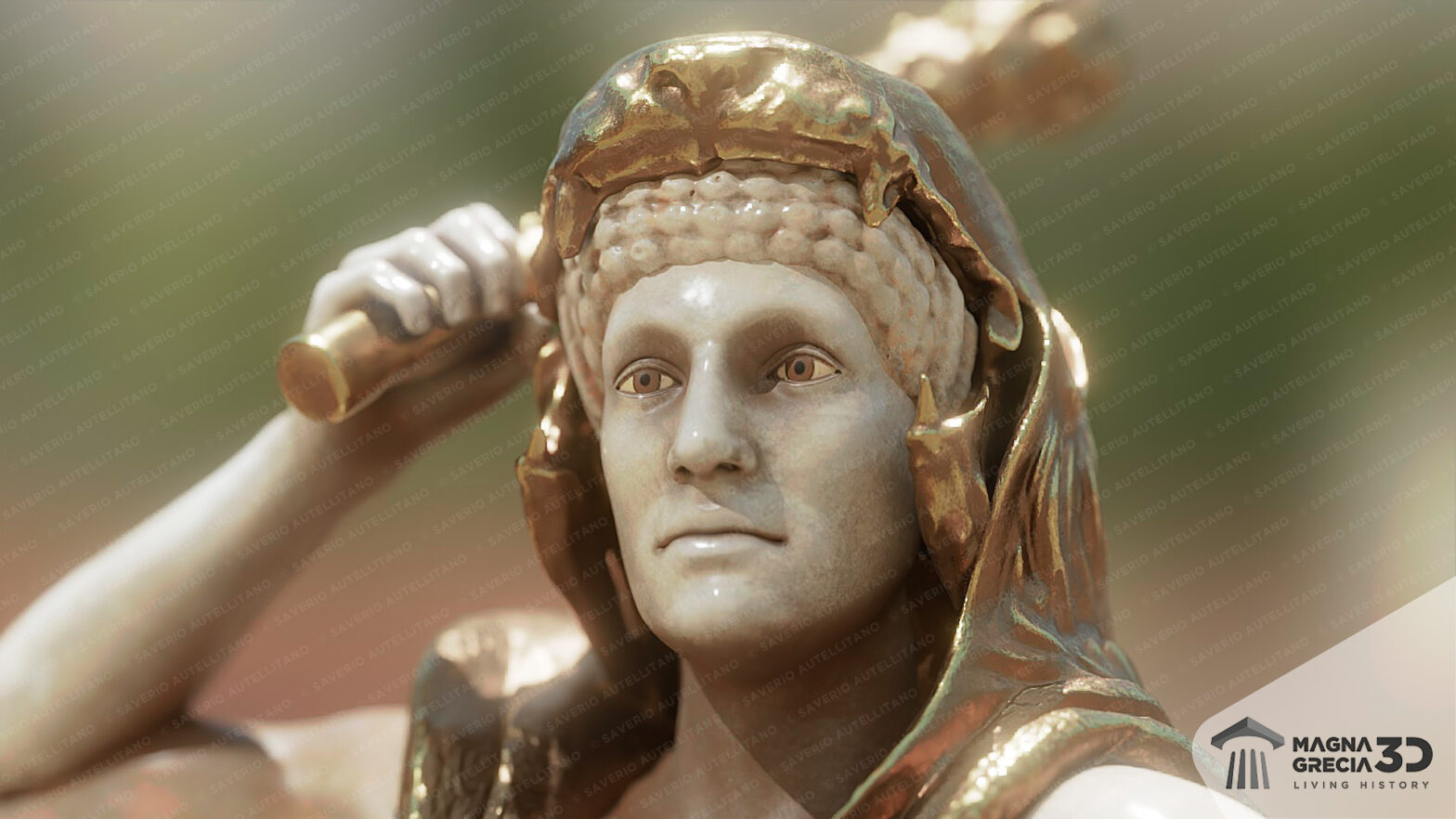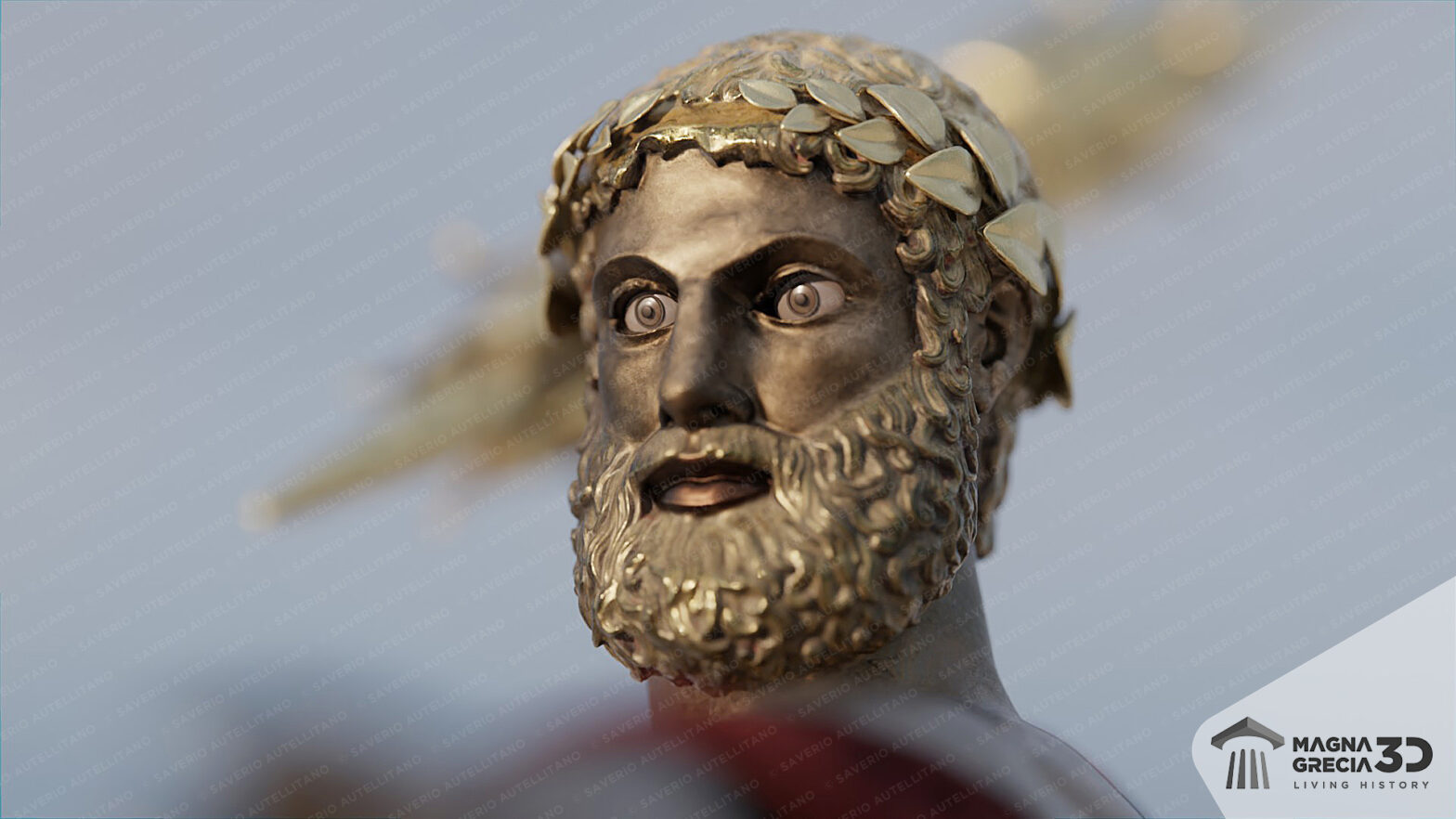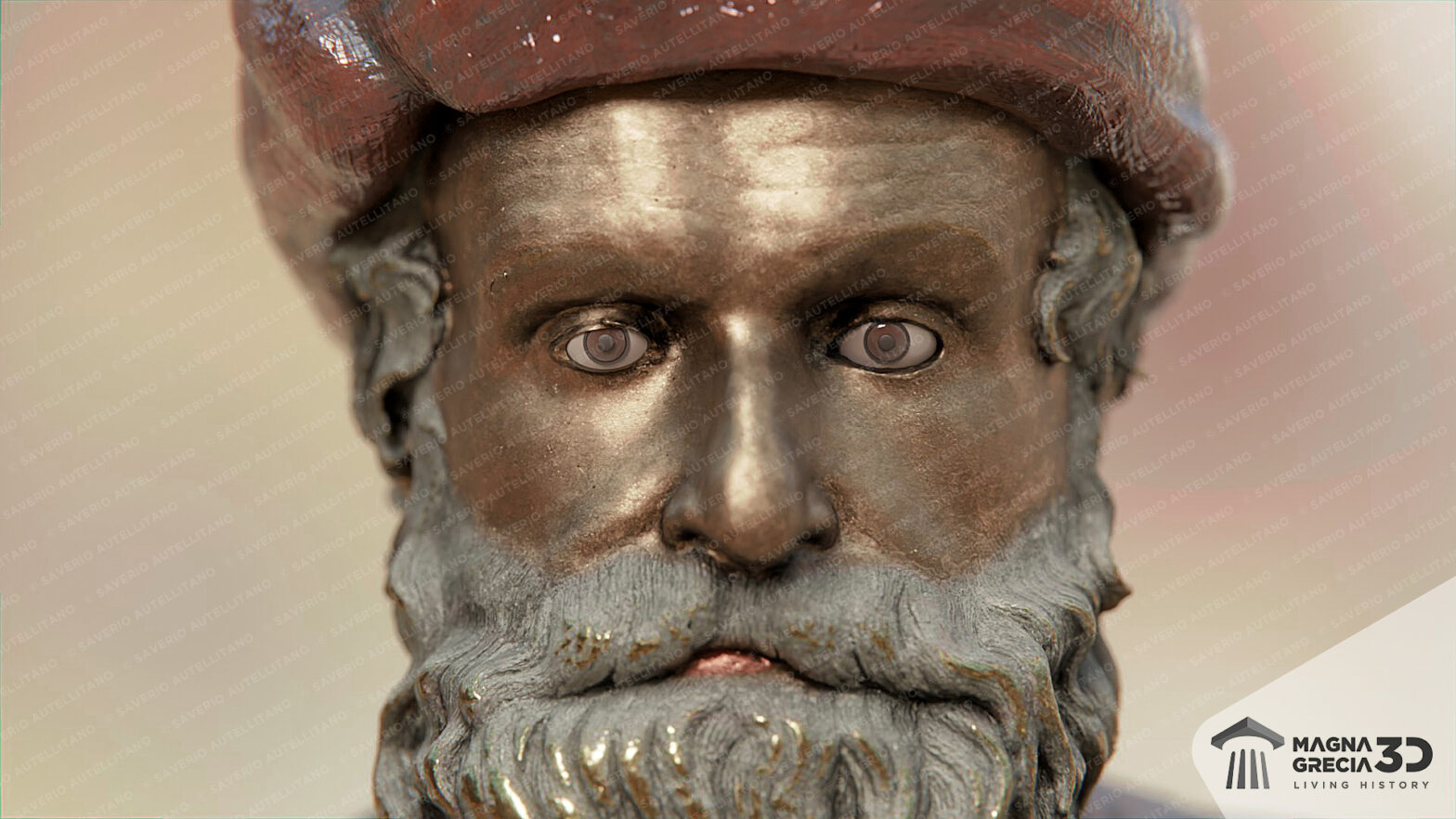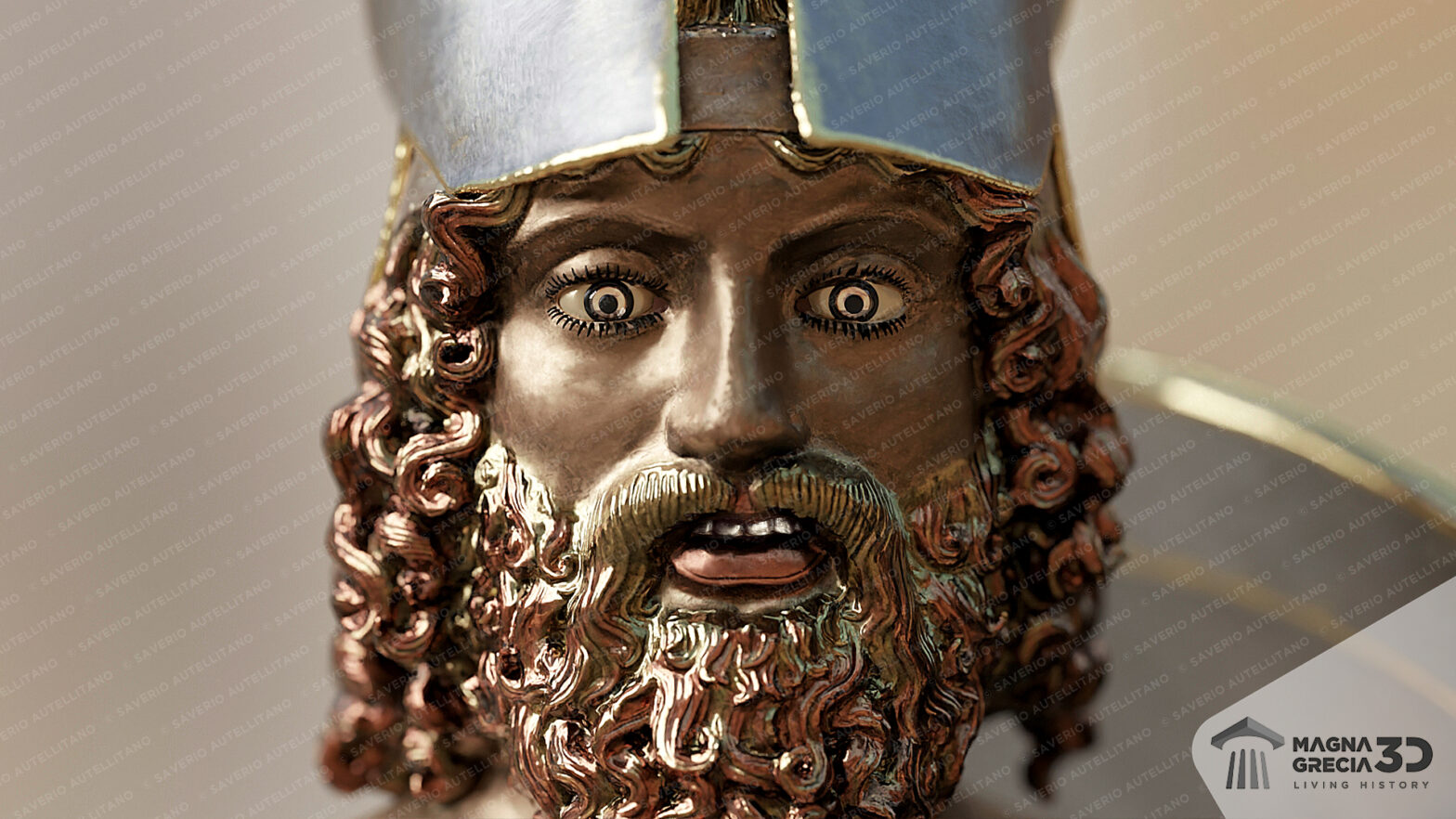As it is possible to notice by the Cypriot monetary issues, the syncretism between Heracles and Melqart testifies the presence of a beardless head, only covered by a lion skin, where Greek stylistic features seem to prevail over Phoenician ones. As regards the Heracles of Cyprus, Paolo Moreno was the only scholar who tried to describe a reconstruction of the missing parts, “this reconstruction was conducted taking into account not only the clamps and the signs of the bronze cover remained on the marble, but also the compositional, proportional and perspectival anomalies of the figure, in their complexity and unity”. It seems pertinent to integrally share the hypothesis of Moreno, which we already formulated independently a few years ago, after an autoptic reconnaissance of the statue. As a matter of fact, the interpretation of the character represented in the statue of Mothya has to be based only on the integration of the iconographic elements which have been lost.
Motya Charioteer




